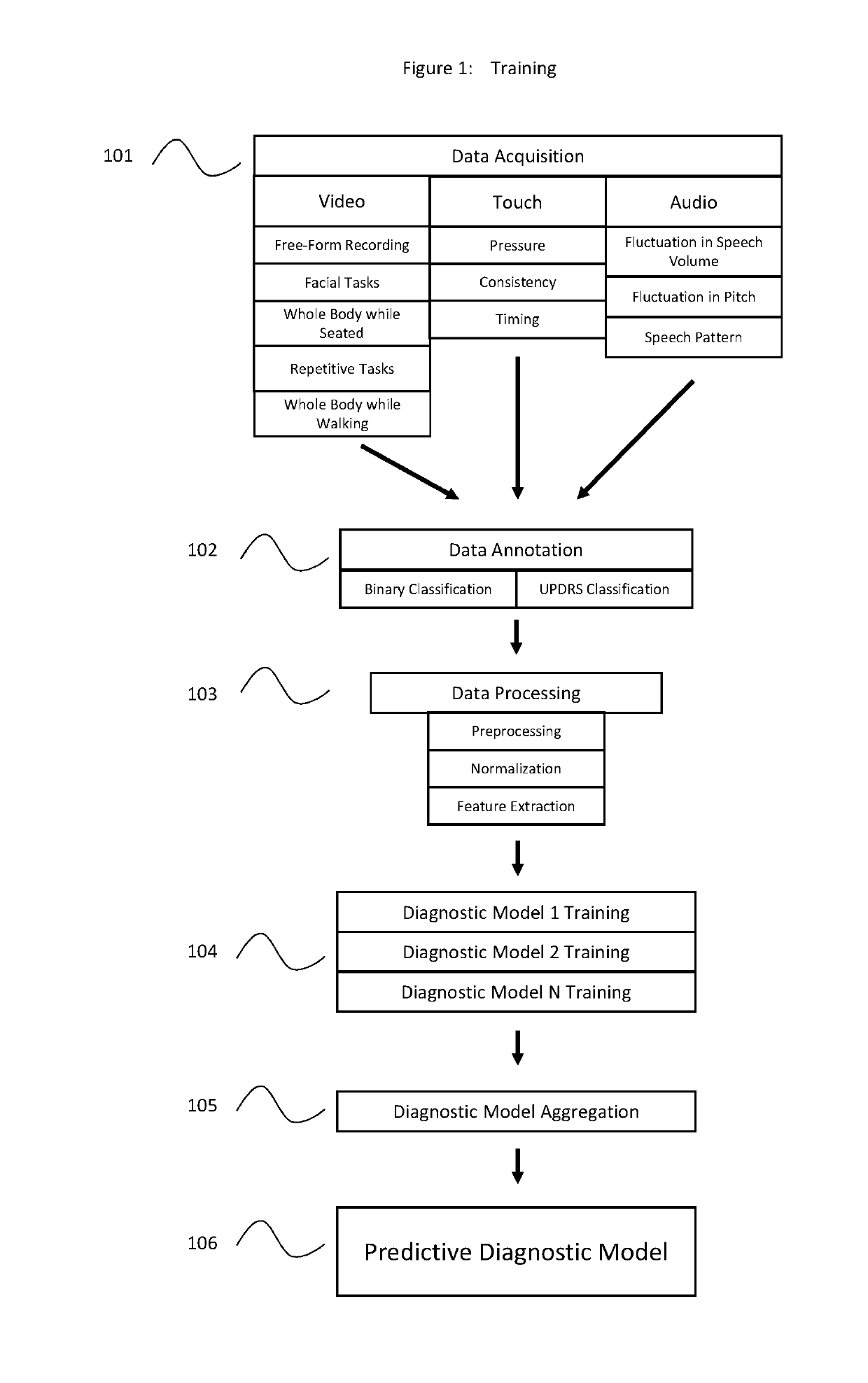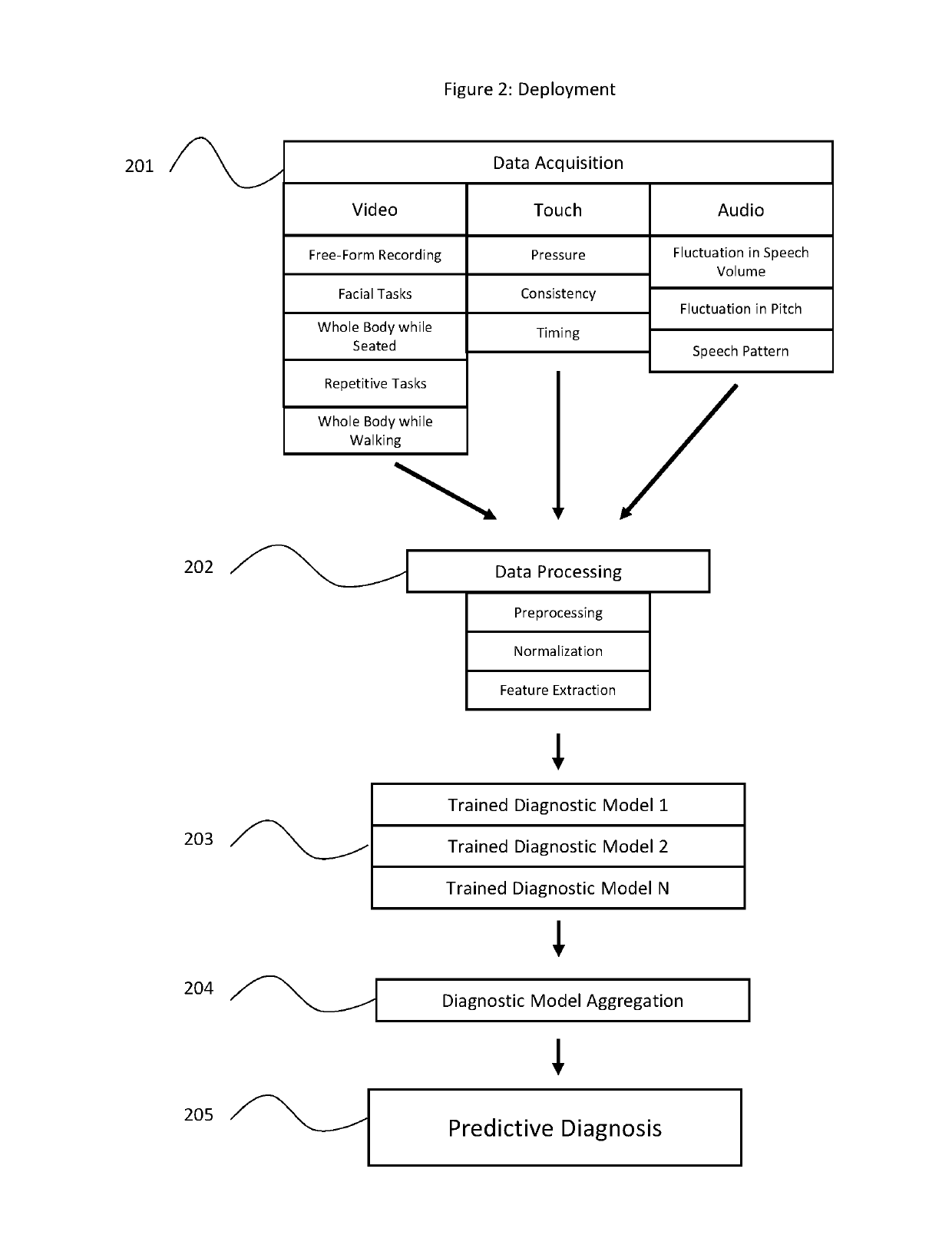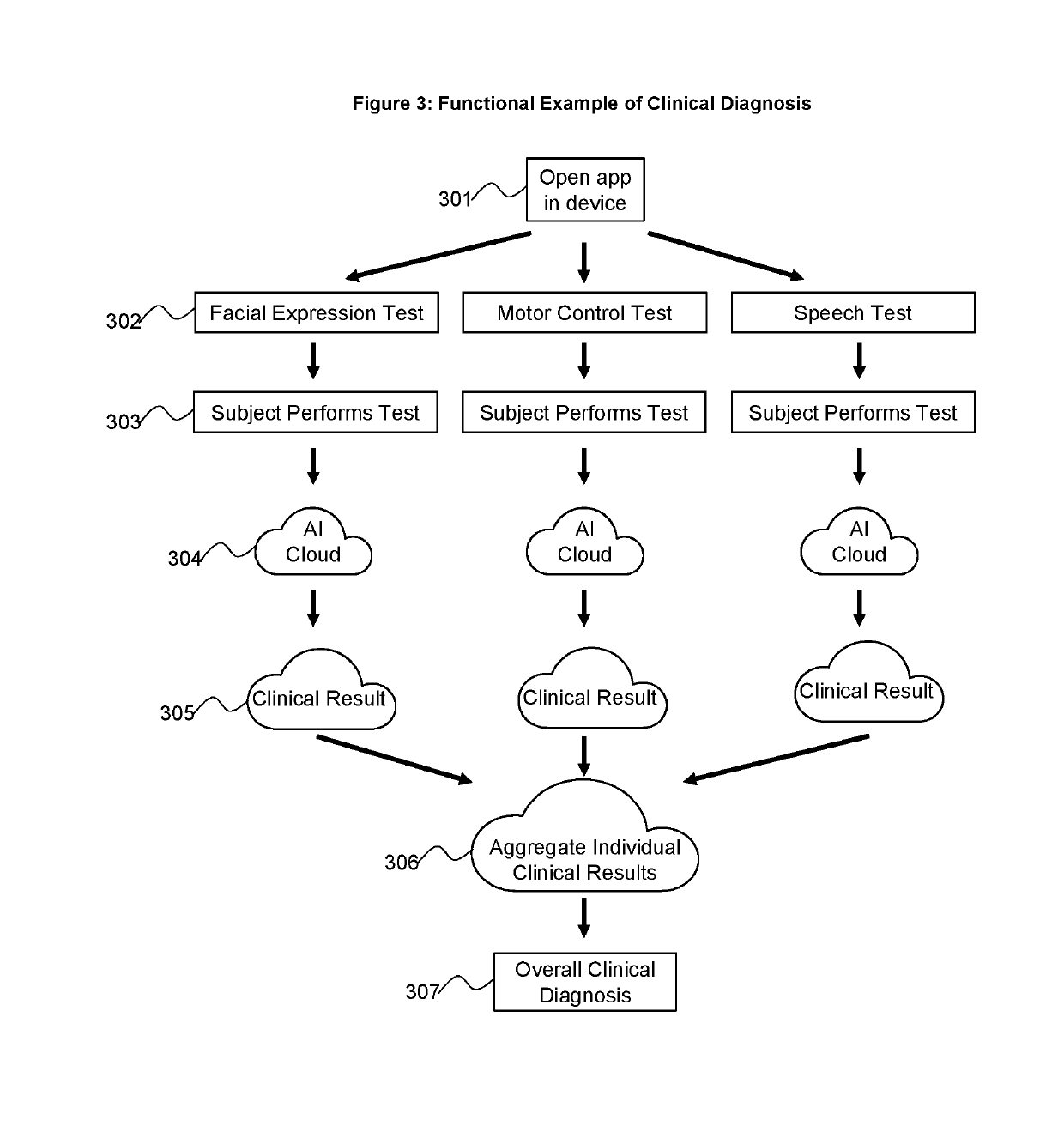Machine learning based system for identifying and monitoring neurological disorders
a neurological disorder and machine learning technology, applied in the field of machine learning based system for identifying and monitoring neurological disorders, can solve the problems of gps having an error rate of just under 50% when, general neurologists have a significant error rate, and many general practitioners lack the necessary training to accurately diagnose movement disorders. , to achieve the effect of accurate and rapid diagnosis of patients
- Summary
- Abstract
- Description
- Claims
- Application Information
AI Technical Summary
Benefits of technology
Problems solved by technology
Method used
Image
Examples
working example
[0105]The following Working Example provides one exemplary embodiment of the present invention, and is not intended to limit the scope of the invention in any way. This is one specific embodiment of a general system that diagnoses movement disorders. Such disorders include, but are not limited to, the following: Parkinson's Disease (PD), Vascular PD, drug induced PD, Multisystem atropy, Progressive Supranuclear Palsy, Corticobasal Syndrome, Front-temporal dementia, Psychogenic tremor, Psychogenic movement disorder, and Normal Pressure hydrocephalus; Ataxia, including Friedrichs Ataxia, spinocerebellar ataxias 1-14, X-linked congenital ataxia, Adult onset ataxia with tocopherol deficiency, Ataxia-telangiectasia, and Canavan Disease; Huntington's disease, Neuro-acanthocytosys, benign hereditary chorea, and Lesch-Nyan syndrome; Dystonia, including Oppenheim's torsion dystonia, X-linked dystonia-Parkinsonism, Dopa-responsive dystonia, Craio-cervical dystonia, Rapid onset dystonia parkin...
PUM
 Login to View More
Login to View More Abstract
Description
Claims
Application Information
 Login to View More
Login to View More - R&D
- Intellectual Property
- Life Sciences
- Materials
- Tech Scout
- Unparalleled Data Quality
- Higher Quality Content
- 60% Fewer Hallucinations
Browse by: Latest US Patents, China's latest patents, Technical Efficacy Thesaurus, Application Domain, Technology Topic, Popular Technical Reports.
© 2025 PatSnap. All rights reserved.Legal|Privacy policy|Modern Slavery Act Transparency Statement|Sitemap|About US| Contact US: help@patsnap.com



